Jeff’s Note: Can you sense it? Can you feel it in your gut?
The pace of technological advancement is so fast, it’s impossible to keep up. Breakthroughs are happening every week in multiple sectors of tech. It’s so rapid that it’s hard to make sense of it all.
But it’s more than that… something special is happening. Different technologies from different industries are merging, creating even more incredible developments. Today’s Bleeding Edge is a perfect example.
Advanced semiconductors, ultra-fine electrodes, surgical robotic systems, wireless technology, and artificial intelligence have come together to enable a human to control a computing system simply with their thoughts.
There are hundreds of examples. This confluence of technologies is happening everywhere. And it has led to a “hyper acceleration” event – only the third in recorded history, and the most explosive ever.
If you’d like to hear more about these developments, I hope you’ll join me tonight. I’m going to be discussing previous hyper acceleration events… how they can make fortunes for those who know how to play them… and a couple of companies I think are primed to benefit from this convergence.
We’re kicking things off tonight at 8 p.m. ET. You can go here to automatically sign up.
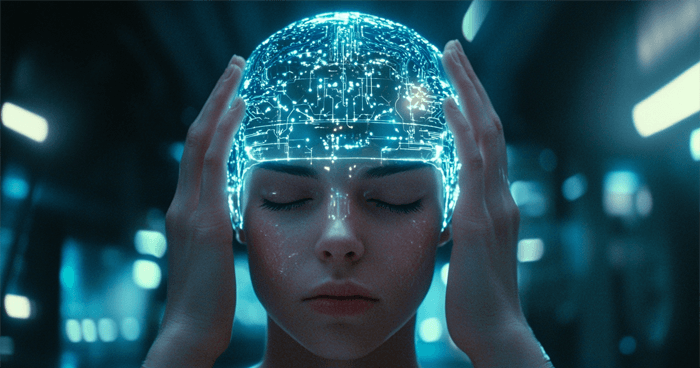
A recent tech announcement reminded me of something that OpenAI CEO Sam Altman wrote a couple of years after founding OpenAI in 2015.
He wrote about “the merge,” an event when humans and machines will merge.
To some, this is a frightening thought. Perhaps images of The Borg on Star Trek may come to mind.
For others, the idea is exciting, unlocking the future of limitless human potential with the augmentation of artificial intelligence and unbridled computational power.
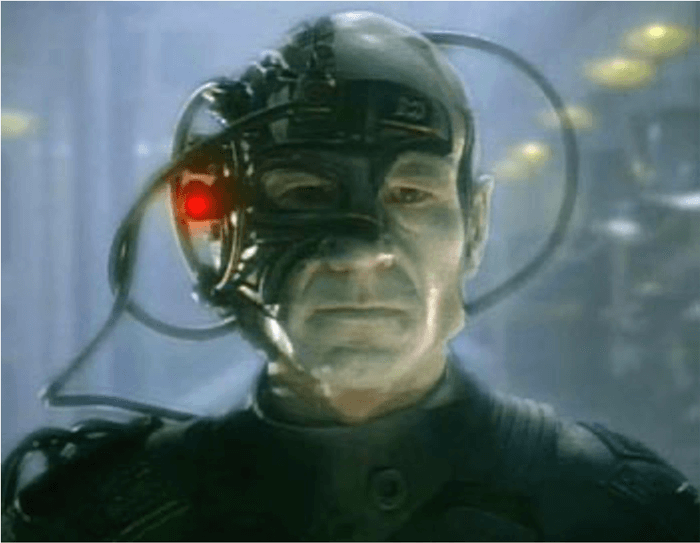
Captain Picard as Locutus, a Borg | Source: Picture from DS9: “Emissary”
Altman was non-specific on timing, using a range lacking any substance – somewhere between 2025 and 2075. Kind of hard to get that timing wrong – it’s like predicting that the singularity will happen sometime in the next 100 years. But that’s neither here nor there…
He did make an accurate point: that the merge has actually already started. He was referring to how heavily dependent the human race has already become on technology.
PCs, smartphones, social media feeds, search engines – all augmenting our professional and personal lives. And in the case of many tech companies like Meta (META), Alphabet (GOOGL), Microsoft (MSFT), our brains and thoughts are being heavily influenced by the political narratives and manipulated realities being pushed on us by a very limited few.
Kind of like a programmed, algorithmic distortion or derangement field that most don’t even realize is happening.
The most ironic part about Altman’s thoughts about the merge is that Elon Musk had already founded Neuralink earlier that year.
Neuralink, as I believe most of my subscribers already know, is the leading brain-computer interface (BCI) company that surgically implants electrodes near neurons in the brain and interprets brain activity using artificial intelligence – enabling those with the implants to control a computing or robotic system.
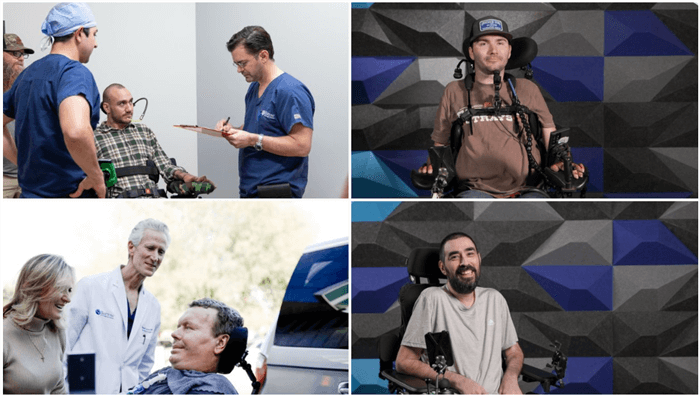
Neuralink’s Version of The Borg | Source: Barrow Neurological Institute
To the great disappointment of all those who criticized and laughed at Elon Musk for entering the field of neuroscience, Neuralink now has seven “merged” human beings who can control computing systems just with their thoughts.
All seven suffered from either spinal cord injuries or ALS, resulting in their inability to control their arms/fingers.
Their lives have been transformed for the better, in indescribable ways.
Just to make a point, this technology isn’t a novelty or something with limited utility.
Have a look at the usage levels of Neuralink’s BCI technology with five of the merged patients.
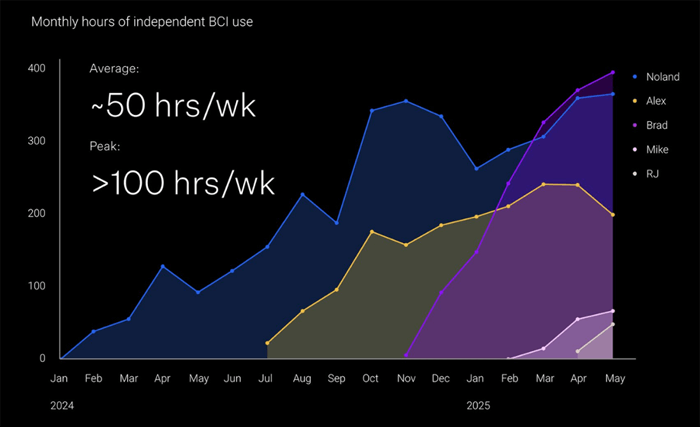
Hours of Neuralink BCI Use Per Month | Source: Neuralink
After patients have the surgical implants, utilization climbs quickly. On average, users spend about 50 hours a week using their BCI technology, with a peak of 100 hours a week by one of the patients. Just incredible.
In the heartwarming clip below, Brad Smith – a patient with ALS who is also non-verbal – can play a video game and speak with his family. For anyone interested in seeing a short, twelve-minute story on Mr. Smith and his journey with Neuralink, you can find it right here.
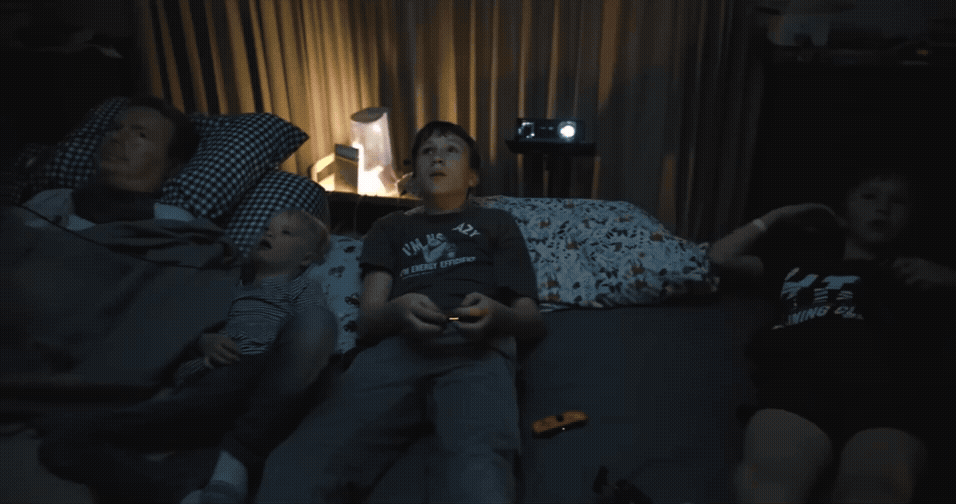
Brad Smith Playing Video Games with Family | Source: Neuralink
The fact is that the merge is already happening, and it’s initially helping people who need it the most.
The most interesting – and perhaps controversial – point that Altman made back in 2017, just before the fallout with Elon Musk over the direction of OpenAI (which was designed to be a non-profit) was this…
We will be the first species ever to design our own descendants. My guess is that we can either be the biological bootloader for digital intelligence and then fade into an evolutionary tree branch, or we can figure out what a successful merge looks like.
Translated, Altman was saying that we can either create artificial general intelligence (AGI) and artificial superintelligence (ASI) and hand over the reins of society to this new species of superintelligent beings – while we fade into the background – or we can design and control the merge and continue to remain at the top of the food chain.
So it wasn’t much of a surprise to hear that Altman is in the process of founding a competitor to Neuralink. Clearly, there was no way he was going to partner with Musk at Neuralink…
It’s called Merge Labs.
The word is that Altman will raise $250 million at an $850 million valuation right out of the gate. How’s that for a pre-seed round?
Oddly, Merge Labs is reportedly engaging another one of Altman’s companies, Tools for Humanity. Savvy readers might remember that this is the company that developed the technology behind Worldcoin’s Orb.
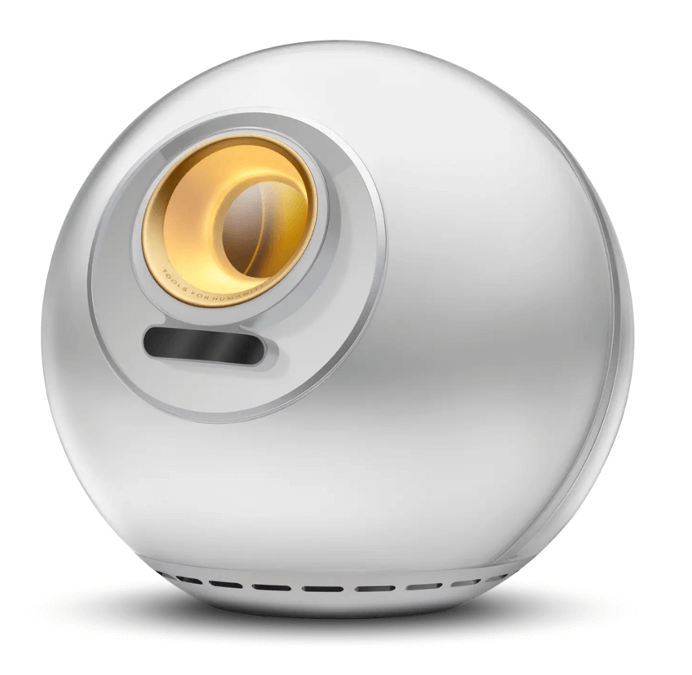
The Orb Biometric Scanner | Source: Tools for Humanity
Worldcoin, which was renamed World late last year, is Altman’s company that wants to biometrically scan the faces and irises of the world’s population… and in the process distribute a cryptocurrency – WLD – to those that participate.
I’ve written about Worldcoin, critically, in the past on several occasions… most recently being earlier this year, when the project launched its app wallet.
The choice of using Tools for Humanity, a company backed primarily by crypto-centric venture capital firms like Blockchain Capital, a16z crypto, and Distributed Global, and specializing in biometric technology, seems like a very odd choice.
But Altman is motivated, and he clearly has no trouble raising capital.
Meanwhile, the rivalry between Elon Musk xAI and Altman’s OpenAI has only deepened. Musk and his team at xAI have overtaken OpenAI in the race to artificial general intelligence, and the gap is getting wider.
I’ve predicted for some time now that xAI will achieve AGI no later than March/April 2026. That’s just seven or eight months away.
And somewhat ironically, the imminent arrival of AGI is, in fact, the catalyst for merging.
After all, if the human race waits too long and is not part of the process of evolving human augmentation, it may miss its chance entirely. I’m not advocating for or against. My simple point is that it will happen whether we like it or not.
To some of us, that’ll be just fine.
To others, it will be the beginning of the decline of the human race.
Jeff
The Bleeding Edge is the only free newsletter that delivers daily insights and information from the high-tech world as well as topics and trends relevant to investments.
The Bleeding Edge is the only free newsletter that delivers daily insights and information from the high-tech world as well as topics and trends relevant to investments.